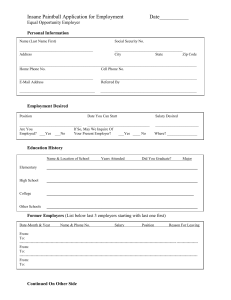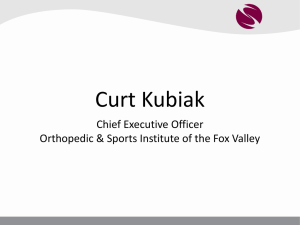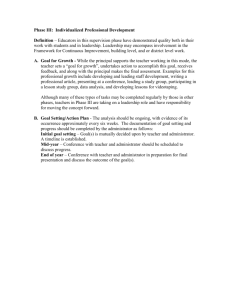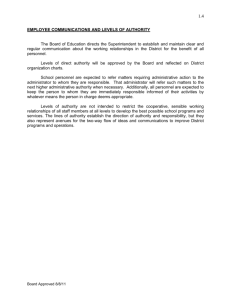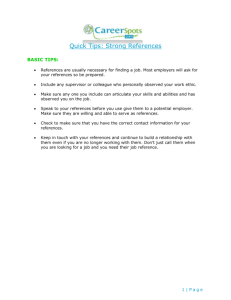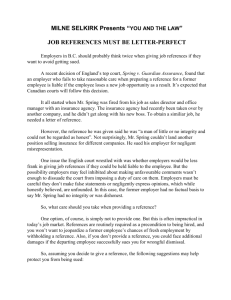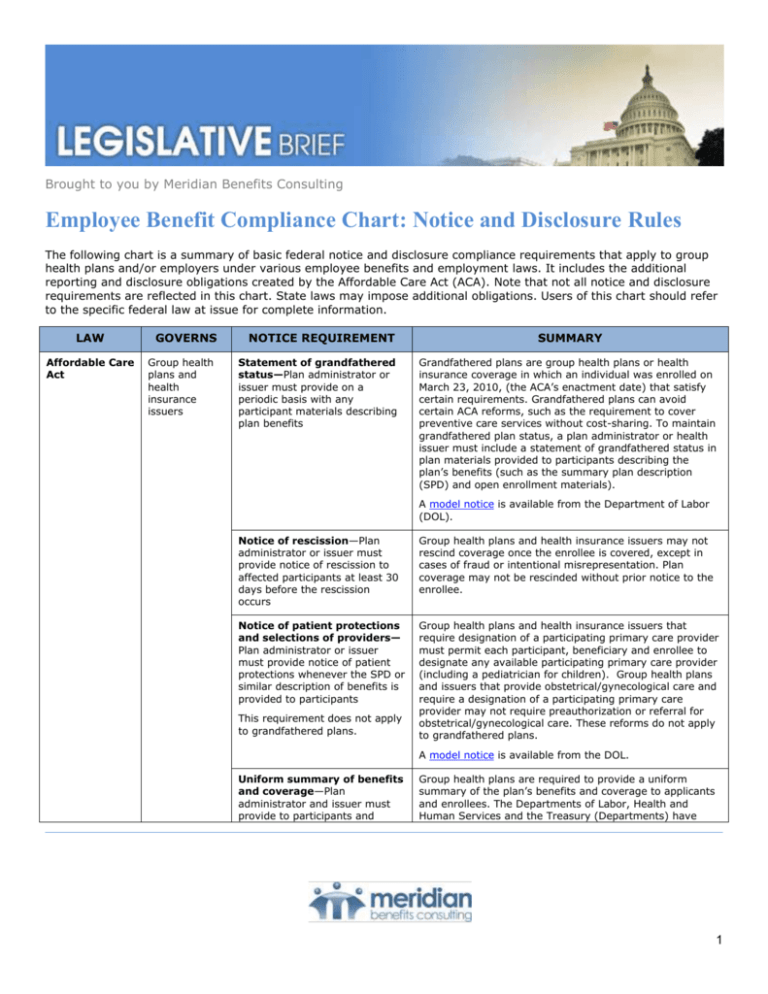
Brought to you by Meridian Benefits Consulting
Employee Benefit Compliance Chart: Notice and Disclosure Rules
The following chart is a summary of basic federal notice and disclosure compliance requirements that apply to group
health plans and/or employers under various employee benefits and employment laws. It includes the additional
reporting and disclosure obligations created by the Affordable Care Act (ACA). Note that not all notice and disclosure
requirements are reflected in this chart. State laws may impose additional obligations. Users of this chart should refer
to the specific federal law at issue for complete information.
LAW
Affordable Care
Act
GOVERNS
Group health
plans and
health
insurance
issuers
NOTICE REQUIREMENT
Statement of grandfathered
status—Plan administrator or
issuer must provide on a
periodic basis with any
participant materials describing
plan benefits
SUMMARY
Grandfathered plans are group health plans or health
insurance coverage in which an individual was enrolled on
March 23, 2010, (the ACA’s enactment date) that satisfy
certain requirements. Grandfathered plans can avoid
certain ACA reforms, such as the requirement to cover
preventive care services without cost-sharing. To maintain
grandfathered plan status, a plan administrator or health
issuer must include a statement of grandfathered status in
plan materials provided to participants describing the
plan’s benefits (such as the summary plan description
(SPD) and open enrollment materials).
A model notice is available from the Department of Labor
(DOL).
Notice of rescission—Plan
administrator or issuer must
provide notice of rescission to
affected participants at least 30
days before the rescission
occurs
Group health plans and health insurance issuers may not
rescind coverage once the enrollee is covered, except in
cases of fraud or intentional misrepresentation. Plan
coverage may not be rescinded without prior notice to the
enrollee.
Notice of patient protections
and selections of providers—
Plan administrator or issuer
must provide notice of patient
protections whenever the SPD or
similar description of benefits is
provided to participants
Group health plans and health insurance issuers that
require designation of a participating primary care provider
must permit each participant, beneficiary and enrollee to
designate any available participating primary care provider
(including a pediatrician for children). Group health plans
and issuers that provide obstetrical/gynecological care and
require a designation of a participating primary care
provider may not require preauthorization or referral for
obstetrical/gynecological care. These reforms do not apply
to grandfathered plans.
This requirement does not apply
to grandfathered plans.
A model notice is available from the DOL.
Uniform summary of benefits
and coverage—Plan
administrator and issuer must
provide to participants and
Group health plans are required to provide a uniform
summary of the plan’s benefits and coverage to applicants
and enrollees. The Departments of Labor, Health and
Human Services and the Treasury (Departments) have
1
Employee Benefit Compliance Chart: Notice and Disclosure Rules
LAW
GOVERNS
NOTICE REQUIREMENT
beneficiaries at the following
times:
With any written application
materials distributed for
enrollment;
If written application
materials for enrollment are
not provided, no later than
when the participant is first
eligible to enroll in
coverage;
By the first day of coverage,
if there was any change to
the information that was
provided upon application
and before the first day of
coverage;
To special enrollees, no later
than the deadline for
providing the SPD;
Upon renewal, if participants
and beneficiaries must
renew to maintain
coverage; and
Upon request.
SUMMARY
provided a template for the summary of benefits and
coverage (SBC) that plans and issuers must use, as well as
additional instructional guidance and sample language for
completing the template. The Departments have also
provided a uniform glossary of health-coverage-related
terms and medical terms for plans and issuers to make
available to plan participants and beneficiaries.
The template, glossary and other related guidance are
available on the Center for Consumer Information &
Insurance Oversight (CCIIO) website.
The SBC requirement became
effective starting with the first
open enrollment periods and
plan years beginning on or after
Sept. 23, 2012.
60-Day Advance Notice of
Plan Changes—Plans and
issuers must provide at least 60
days’ advance notice of midyear material modifications in
plan terms or coverage that
would affect the content of the
SBC and are not reflected in the
most recent SBC.
This notice requirement became
effective when the SBC
requirement went into effect.
A health plan or issuer must provide 60 days’ advance
notice of any material modifications to the plan that are not
are not reflected in the most recent SBC. This notice
requirement is limited to material modifications that do not
occur in connection with a renewal or reissuance of
coverage.
A “material modification” is any change to a plan’s
coverage that independently, or in connection with other
changes taking place at the same time, would be
considered by the average plan participant to be an
important change in covered benefits or other terms of
coverage.
A material modification may include:
An enhancement in covered benefits or services or
other more generous plan or policy terms (for
example, reduced cost-sharing or coverage of
previously excluded benefits); or
This Legislative Brief is not intended to be exhaustive nor should any discussion or opinions be construed as legal advice. Readers
should contact legal counsel for legal advice.
© 2007-2014 Zywave, Inc. All rights reserved. 4/13; EM 6/14
2
Employee Benefit Compliance Chart: Notice and Disclosure Rules
LAW
GOVERNS
NOTICE REQUIREMENT
SUMMARY
Waiver of Annual Limit
Requirement—For health plans
that received a waiver of the
ACA’s annual limit requirements
for plan years beginning before
Jan. 1, 2014, the plan
administrator or issuer must
provide an annual notice to
eligible participants as part of
any plan or policy documents
regarding coverage that are
provided to enrollees.
A material reduction in covered services or benefits or
more strict requirements for receiving benefits (for
example, a new referral requirement or increased
premiums or cost-sharing).
Effective for plan years beginning on or after Jan. 1, 2014,
health plans are prohibited from imposing annual dollar
limits on essential health benefits. For plan years beginning
before Jan. 1, 2014, health plans may impose “restricted
annual limits” on essential health benefits. Under a
temporary program, HHS may have waived a health plan’s
compliance with the ACA’s restricted annual limits if
compliance with the restrictions would have resulted in a
significant decrease in access to benefits or a significant
increase in premiums.
Any plans that received a waiver approval must provide a
notice informing participants that the plan does not meet
the annual limits and has received a waiver for the
requirements. The notice must include:
The dollar amount of the annual limit;
A description of the plan benefits to which the limit
applies; and
An explanation that the plan has received a waiver of
the restricted annual limit requirement.
Plans must use model language to satisfy the waiver notice
requirement, or they must receive HHS’s written
permission to use different language.
Annual limit waivers are valid until the plan year beginning
on or after Jan. 1, 2014, when the restricted annual limits
expire and no annual dollar limits are permitted on any
essential health benefits.
Affordable Care
Act
Employers
sponsoring
group health
plans
IRS Form W-2—Aggregate cost
of applicable employersponsored coverage must be
included on employees’ Forms
W-2.
Employers must disclose the aggregate cost of
applicable employer-sponsored coverage provided to
employees on the employees’ W-2 forms. This
requirement does not mean that the cost of the
coverage will be taxable to employees.
This requirement was originally
effective for tax years beginning
after Dec. 31, 2010. However,
the IRS made reporting optional
for all employers for the 2011
tax year.
The Form W-2 and Instructions, including a category for
reporting the cost of employer-sponsored coverage, are
available on the IRS website.
Small employers (those filing
fewer than 250 W-2-Forms) and
employers contributing only to
certain plans, such as
multiemployer plans or HSAs,
are exempt at least until further
This Legislative Brief is not intended to be exhaustive nor should any discussion or opinions be construed as legal advice. Readers
should contact legal counsel for legal advice.
© 2007-2014 Zywave, Inc. All rights reserved. 4/13; EM 6/14
3
Employee Benefit Compliance Chart: Notice and Disclosure Rules
LAW
GOVERNS
NOTICE REQUIREMENT
SUMMARY
guidance is issued.
Large employers must comply
with the W-2 requirement
beginning in 2012.
Affordable Care
Act
All employers
subject to the
FLSA
Exchange Notice—The ACA
requires employers to provide all
new hires and current
employees with a written notice
about the health insurance
Exchanges.
The compliance deadline for
providing the Exchange notices
matched up with the start of the
first open enrollment period
under the Exchanges, as
follows:
Affordable Care
Act
Applicable
large
employers
with full-time
employees
New Hires—Employers must
provide the notice to each
new employee at the time of
hiring, beginning Oct. 1,
2013. For 2014, the DOL
will consider a notice to be
provided at the time of
hiring if the notice is
provided within 14 days of
an employee’s start date.
Employers must provide all new hires and current
employees with an Exchange notice that:
Includes information regarding the existence of the
Exchange, as well as contact information and a
description of the services provided by the
Exchange;
Explains how an employee may be eligible for a
premium tax credit if the employee purchases a
qualified health plan through the Exchange; and
Contains a statement informing the employee that,
if the employee purchases a qualified health plan
through an Exchange, the employee may lose the
employer contribution (if any) to any health
benefits plan offered by the employer and that all
or a portion of this employer contribution may be
excludable for federal income tax purposes.
The DOL has provided model Exchange notices for
employers to use, which will require some
customization. The model Exchange notices are
available on the DOL’s website.
Current Employees—With
respect to employees who
are current employees
before Oct. 1, 2013,
employers were required to
provide the notice no later
than Oct. 1, 2013.
Code §6056 Reporting—
Effective for 2015, applicable
large employers (those with at
least 50 full-time employees,
including full-time equivalents)
with full-time employees must
file an annual return with the
IRS regarding the health
coverage, if any, provided to
full-time employees. These
employers must also provide a
related annual statement to fulltime employees.
Reporting is required for
2015, with the first returns
due in 2016.
Code section 6056 requires applicable large employers
to report to the IRS information about the health care
coverage, if any, they offered to full-time employees.
Section 6056 also requires those employers to furnish
related statements to employees. Reporting is required
for 2015, with the first returns due in 2016.
According to the IRS, this information reporting is
necessary in order to administer the employer shared
responsibility “pay or play” rules. The IRS information
return will give the IRS information about the
employer’s compliance with the pay or play rules. These
rules impose penalties on applicable large employers
that do not offer required coverage to full-time
employees and dependents.
The employee statements provide information to
employees about coverage that was provided in the
This Legislative Brief is not intended to be exhaustive nor should any discussion or opinions be construed as legal advice. Readers
should contact legal counsel for legal advice.
© 2007-2014 Zywave, Inc. All rights reserved. 4/13; EM 6/14
4
Employee Benefit Compliance Chart: Notice and Disclosure Rules
LAW
GOVERNS
NOTICE REQUIREMENT
The deadlines for these returns
and employee statements are as
follows:
Affordable Care
Act
Employers
with selfinsured health
plans that
provide
minimum
essential
coverage
(MEC)
Section 6056 returns must
be filed with the IRS
annually, no later than Feb.
28 (March 31, if filed
electronically) of the year
after the calendar year to
which the return relates.
The employee statements
for each calendar year must
be furnished to full-time
employees by Jan. 31 of the
next calendar year.
Extensions may be available
in certain circumstances.
Code §6055 Reporting—
Effective for 2015, sponsors of
self-insured health plans that
provide MEC must file an annual
return with the IRS regarding
the health coverage. These
employers must also provide a
related annual statement to
covered individuals.
Reporting is required for
2015, with the first returns
due in 2016.
The deadlines for these returns
and statements are as follows:
Section 6055 returns must
be filed with the IRS
annually, no later than Feb.
28 (March 31, if filed
electronically) of the year
after the calendar year in
which MEC is provided.
The statements for covered
individuals must be provided
by Jan. 31 of the year after
the calendar year in which
MEC is provided. Employers
showing good cause may be
allowed the flexibility to
apply for an extension of
time, not exceeding 30
days, to furnish statements.
SUMMARY
prior year. The information will be used to determine
whether employees can claim a premium tax credit on
their tax returns for coverage purchased through an
Exchange.
The ACA requires health insurance issuers, self-insured
health plan sponsors, government agencies that
administer government-sponsored health insurance
programs and any other entity that provides MEC to
report information on that coverage to the IRS and
covered individuals. This requirement is found in Code
section 6055.
Reporting is required for 2015, with the first returns due
in 2016.
These reporting requirements are intended to provide
the IRS with information necessary to administer other
ACA mandates, such as the large employer shared
responsibility penalty and the individual mandate.
To simplify the reporting process, the IRS will allow
applicable large employers with self-insured plans to
use a single combined form for reporting the
information required under both section 6055 and
section 6056.
This Legislative Brief is not intended to be exhaustive nor should any discussion or opinions be construed as legal advice. Readers
should contact legal counsel for legal advice.
© 2007-2014 Zywave, Inc. All rights reserved. 4/13; EM 6/14
5
Employee Benefit Compliance Chart: Notice and Disclosure Rules
LAW
COBRA
GOVERNS
NOTICE REQUIREMENT
Employers that
had 20 or
more
employees on
more than
50% of the
typical
business days
during the
previous
calendar year
Initial/General COBRA
notice—Plan administrator must
provide generally within 90 days
of when group health plan
coverage begins.
Notice to covered employees and covered spouses of the
right to purchase temporary extension of group health
coverage when coverage is lost due to a qualifying event.
Notice to plan
administrator—Employer must
notify plan administrator within
30 days of a) qualifying event or
b) the date coverage would be
lost as a result of the qualifying
event, whichever is later.
Notice of certain qualifying events must be sent to plan
administrator when employer is not plan administrator
(e.g., employer has contracted with a third party to
administer COBRA).
COBRA election notice—Plan
administrator must generally
provide within 14 days after
being notified by the employer
or qualified beneficiary of the
qualifying event (or 44 days
after qualifying event if
employer is also plan
administrator).
Notice to qualified beneficiaries of their right to elect
COBRA coverage upon occurrence of qualifying event.
Qualified beneficiaries may be covered employees, covered
spouses and dependent children.
Notice of unavailability of
COBRA—Plan administrator
must provide this notice
generally within 14 days after
being notified by the individual
of the qualifying event (or 44
days after qualifying event if
employer is also plan
administrator).
Plan administrator must send a notice that an individual is
not entitled to COBRA coverage to those individuals who
provide notice to the plan administrator of a qualifying
event whom the plan administrator determines are not
eligible for COBRA coverage.
Notice of early termination of
COBRA coverage—Plan
administrator must provide as
soon as practicable following the
plan administrator’s
determination that coverage will
terminate.
Notice to qualified beneficiaries that COBRA coverage will
terminate earlier than the maximum period of coverage.
The notice must include the reason for early termination,
date of termination and any rights that qualified beneficiary
may have to elect alternative group or individual coverage,
such as a conversion right. May be sent with HIPAA
certificate of creditable coverage.
Notice of insufficient
payment—Plan administrator
must provide reasonable period
of time to cure deficiency before
terminating COBRA (e.g., 30day grace period).
Plan administrator must notify qualified beneficiary that
payment for COBRA was not significantly less than the
correct amount before coverage is terminated for
nonpayment. A payment is not significantly less than the
amount required if the deficiency is no greater than the
lesser of $50.00 or 10 percent of the amount the plan
requires to be paid.
Premium change notice—Plan
administrator should provide at
least one month prior to
COBRA does not explicitly require advance notice of a
premium increase. However, COBRA regulations provide
that if a COBRA premium payment is short by an amount
Government
and church
plans are
exempt
SUMMARY
A model General COBRA Notice is available on the DOL
website under COBRA guidance.
The following qualifying events trigger the employer’s
notice requirement: (a) employee’s termination or
reduction in hours; (b) employee’s death; (c) employee’s
Medicare entitlement; and (d) employer’s bankruptcy.
A model COBRA Election Notice is available on the DOL
website under COBRA guidance.
This Legislative Brief is not intended to be exhaustive nor should any discussion or opinions be construed as legal advice. Readers
should contact legal counsel for legal advice.
© 2007-2014 Zywave, Inc. All rights reserved. 4/13; EM 6/14
6
Employee Benefit Compliance Chart: Notice and Disclosure Rules
LAW
GOVERNS
NOTICE REQUIREMENT
effective date.
SUMMARY
that is insignificant, the qualified beneficiary must be
provided notice of such underpayment and a reasonable
amount of time to make the payment difference.
Also, COBRA requires equal coverage and, to some extent,
equal treatment between COBRA qualified beneficiaries and
similarly situated non-COBRA beneficiaries.
The DOL has stated that continuation coverage should not
be terminated for insufficient payment if COBRA qualified
beneficiaries are not provided a reasonable advance notice
of increased premiums and a reasonable opportunity to pay
the increased premium.
ERISA
ERISA
employee
welfare benefit
plans, unless
exempted
Summary plan descriptions Plan administrator must provide
automatically to participants
within 90 days of becoming
covered by the plan (though a
new plan has 120 days after
becoming subject to ERISA to
distribute SPD). Updated SPD
must be furnished every 5 years
if changes made to SPD
information or plan is amended.
Otherwise, must furnish every
10 years.
The SPD is the primary vehicle for informing participants
and beneficiaries about their plan and how it operates.
Must be written for average participant and be sufficiently
comprehensive to apprise covered persons of their
benefits, rights and obligations under the plan.
Summary of material
modification—Plan
administrators must provide
automatically to participants
within 210 days after the end of
the plan year in which the
change is adopted.
Describes material modifications to a plan and changes in
the information required to be in the SPD. Distribution of
updated SPD satisfies this requirement.
If benefits or services are
materially reduced, participants
must be provided notice within
60 days from adoption; or,
where participants receive such
information from the plan
administrator at regular
intervals of not more than 90
days, notice of materially
reduced benefits or services
must be provided within the
regular interval.
Plan documents—Plan
administrator must provide
copies no later than 30 days
after a written request and
make copies available at
specified locations.
The plan administrator must furnish copies of certain
documents upon written request by a participant and/or
beneficiary and must have copies available for
examination. The documents include the latest updated
SPD, latest Form 5500, trust agreement, and other
instruments under which the plan is established or
operated.
This Legislative Brief is not intended to be exhaustive nor should any discussion or opinions be construed as legal advice. Readers
should contact legal counsel for legal advice.
© 2007-2014 Zywave, Inc. All rights reserved. 4/13; EM 6/14
7
Employee Benefit Compliance Chart: Notice and Disclosure Rules
LAW
GOVERNS
NOTICE REQUIREMENT
SUMMARY
Form 5500—Plan administrator
generally must file by the last
day of the seventh month
following the end of the plan
year, unless an extension has
been granted. For calendar year
plans, the deadline is normally
July 31 of the following year.
Form 5500 filing requirements vary according to type of
filer (that is, small plans, large plans and direct filing
entities). Certain employee benefit plans are exempt from
the annual reporting requirements or are eligible for limited
reporting options.
Small health plans (less than
100 participants) that are fully
insured, unfunded or a
combination insured/unfunded,
are generally exempt from the
Form 5500 filing requirement.
The DOL website and the latest Form 5500 instructions
provide information on who is required to file and detailed
information on filing.
Form M-1—Plan administrator
must file with the DOL by March
1st of each year for the previous
calendar year. A 60-day
automatic extension is available
upon request.
Form M-1 is the annual report that must be filed by
multiple employer welfare arrangements (MEWAs) and
entities claiming exception from MEWA status. In general,
a MEWA offers health benefits to the employees of two or
more employers. More information about the M-1 filing
requirement, and the online filing system, is available on
the DOL website.
Summary annual report –Plan
administrators must provide
automatically to participants
within 9 months after end of
plan year, or 2 months after due
date for filing Form 5500 (with
approved extension).
The summary annual report is a narrative summary of the
Form 5500 and includes a statement of the right to receive
the annual report. Model notices are found in 29 CFR
2520.104b-10(d).
Plans that are exempt from the
annual 5500 filing requirement
are not required to provide an
SAR. Large, completely
unfunded health plans are also
generally exempt from the SAR
requirement.
Internal
Revenue Code
Group health
plans
IRS Form 8928—Report and
Pay Excise Taxes—Generally
must be filed (with the
applicable excise tax) by the due
date for filing the plan sponsor’s
or administrator’s federal
income tax return for the year in
which the failure occurred.
An automatic extension for filing
is available, although the
extension does not affect the
time to pay the excise tax.
There is also limited relief for
certain inadvertent failures and
“reasonable cause” mistakes
The Form 8928 excise tax reporting requirement applies to
failures to comply with certain group health plan mandates
included in the IRC, such as:
Required levels of coverage for pediatric vaccines;
COBRA continuation coverage requirements;
HIPAA’s portability, access and renewability and
nondiscrimination rules;
Genetic information nondiscrimination requirements;
Mental health parity requirements; and
Health care reform mandates.
This Legislative Brief is not intended to be exhaustive nor should any discussion or opinions be construed as legal advice. Readers
should contact legal counsel for legal advice.
© 2007-2014 Zywave, Inc. All rights reserved. 4/13; EM 6/14
8
Employee Benefit Compliance Chart: Notice and Disclosure Rules
LAW
GOVERNS
NOTICE REQUIREMENT
SUMMARY
that are corrected within 30
days.
Family and
Medical Leave
Act (federal
FMLA)
Genetic
Information
Nondiscrimination
Act (GINA)
Genetic
Information
Nondiscrimination
Act (GINA)
Private sector
employers
with 50 or
more
employees in
20 or more
workweeks in
current or
preceding
calendar year,
as well as all
public
agencies and
all public and
private
elementary
and secondary
schools
Group health
plans and
health
insurance
issuers
Employers in
the private
sector and
state and local
governments
that employ
15 or more
employees
General Notice—Must be
posted in a location available to
both employees and applicants
and included in written
guidance, if it exists.
All covered employers are required to post a notice
explaining the FMLA, including the family military leave
amendments, regardless of whether they have eligible
employees. If written guidance regarding employee
benefits or leave rights exists, such as in an employee
handbook, then FMLA information regarding entitlements
and obligations must be included in it as well.
The DOL has issued a model poster.
Notice of Eligibility and
Rights & Responsibilities—
Employer must provide written
guidance, upon employee notice
of need for FMLA leave.
Written guidance must be provided to an employee upon
the employee’s notice to the employer of the need for
FMLA leave. The employer must detail the specific
expectations and obligations of the employee, and explain
the consequences of the failure to meet these obligations.
The DOL has issued an optional notice which may be used
to satisfy this requirement.
Designation Notice—Employer
must notify employer of whether
leave has been designated as
FMLA leave.
Within five days of receiving sufficient information to grant
or deny FMLA leave, it must provide a designation notice
informing the employee whether the leave is designated as
FMLA leave. The DOL has issued an optional notice which
may be used to satisfy this requirement.
Notice of Research
Exception—To satisfy the
research exception, plans or
issuers must provide
participants with a written
request and must file a Notice of
Research Exception with the
designated federal agency.
Title I of GINA prohibits health plans and health insurance
issuers from requiring or requesting that an individual
undergo a genetic test, subject to some narrow exceptions.
The research exception allows a health plan or issuer to
request (but not require) that an individual undergo a
genetic test if the information is not used for underwriting
and some additional requirements are met. The plan or
issuer must:
Make the request in writing to the participant;
Clearly indicate that the test is voluntary and will not
impact plan eligibility or contributions; and
Complete a Notice of Research Exception.
General Notice—Must be
posted in a conspicuous place.
Covered entities must post notices describing GINA’s
provisions in conspicuous places where notices to
employees, applicants and members are customarily
posted. A model poster is available.
Request for Medical
Information—Notice is not
generally required; however,
model language can be used by
an employer lawfully requesting
medical information so that any
genetic information included
with the response will be
Any receipt of genetic information in response to the
request for medical information will be deemed inadvertent
if the employer’s request includes the model (or similar)
language. The model language can be found at EEOC Reg.
§ 1635.8(b)(1)(i)(B)
This Legislative Brief is not intended to be exhaustive nor should any discussion or opinions be construed as legal advice. Readers
should contact legal counsel for legal advice.
© 2007-2014 Zywave, Inc. All rights reserved. 4/13; EM 6/14
9
Employee Benefit Compliance Chart: Notice and Disclosure Rules
LAW
GOVERNS
NOTICE REQUIREMENT
SUMMARY
deemed inadvertent.
Request for Genetic
Information for Toxic
Substance Monitoring—
Written notice required if genetic
information is acquired for toxic
substance monitoring.
Employers that want to obtain genetic information of
employees in order to monitor the biological effects of
exposure to toxic substances in the workplace must
provide each affected employee with:
Written notice of the genetic monitoring; and
The individual monitoring results.
The employee must authorize the monitoring, unless it is
required by law.
HIPAA and the
ACA—Wellness
Programs
Group health
plans and
issuers that
offer healthcontingent
wellness
programs
Notice of Disclosure—Notice is
required for certain permitted
disclosures of genetic
information.
Employers generally may not disclose an employee’s
genetic information. Certain exceptions apply to this rule,
including disclosure of genetic information in response to a
court order or to public health agencies regarding
contagious, life-threatening illness. Notice to the employee
is required if the employer discloses genetic information for
these purposes.
Notice of Alternative
Standard—Plans and issuers
must disclose the availability of
an alternative standard in all
materials describing the
wellness program.
Health-contingent wellness programs, or wellness
programs that require individuals to satisfy a standard
related to a health factor in order to receive a reward,
violate federal nondiscrimination rules unless the program
satisfies a number of conditions:
Limit reward to 30 percent of cost of coverage (or
50 percent for health-contingent wellness
programs designed to prevent or reduce tobacco
use). For plan years beginning before Jan. 1,
2014, the maximum permissible reward was 20
percent of the cost of health coverage;
Designed to reasonably promote health and
prevent disease;
Provide annual opportunity to qualify;
Provide reasonable alternative standard for
obtaining the reward for certain individuals; and
Disclose availability of an alternative standard.
The disclosure must include contact information for
obtaining the alternative and a statement that
recommendations of an individual’s personal physician will
be accommodated. If plan materials merely mention that a
wellness program is available, without describing its terms,
this disclosure is not required. Final regulations provide
sample language that can be used to satisfy this
requirement.
This Legislative Brief is not intended to be exhaustive nor should any discussion or opinions be construed as legal advice. Readers
should contact legal counsel for legal advice.
© 2007-2014 Zywave, Inc. All rights reserved. 4/13; EM 6/14
10
Employee Benefit Compliance Chart: Notice and Disclosure Rules
LAW
HIPAA—
Privacy and
Security
GOVERNS
NOTICE REQUIREMENT
Covered
Entities: Group
health plans,
health care
clearinghouses, health
care providers
that transmit
any health
information
electronically,
and enrolled
sponsors of
Medicare
prescription
drug discount
card, unless
exception
applies
Notice of Privacy Practices—
The plan administrator or
insurer must provide the Notice
of Privacy Practices when a
participant enrolls, upon request
and within 60 days of a material
revision to the notice.
Business
Associates:
entities that
create,
receive,
maintain or
transmit
protected
health
information
(PHI) on
behalf of a
Covered Entity
HIPAA—
Transaction
Standards and
Operating
Rules
Controlling
health plans
SUMMARY
HHS regulations require that participants be provided with
a detailed explanation of their privacy rights, the plan’s
legal duties with respect to protected health information,
the plan’s uses and disclosures of protected health
information, and how to obtain a copy of the Notice of
Privacy Practices.
At least once every three years,
participants must be notified
about the availability of the
Notice of Privacy Practices.
Notice of Breach of
Unsecured PHI—Covered
entities and their business
associates must provide
notification following a breach of
unsecured PHI without
unreasonable delay and in no
case later than 60 days following
the discovery of a breach.
Following a breach of unsecured PHI, covered entities must
provide notification of the breach to affected individuals,
HHS and, in certain circumstances, to the media. If the
unsecured PHI is held by a business associate, the business
associate must notify the covered entity that a breach has
occurred.
HIPAA Certification—
Controlling health plans must file
a statement with HHS certifying
their compliance with HIPAA’s
electronic transaction standards
and operating rules.
Health plans must file a statement with HHS certifying their
compliance with HIPAA’s electronic transaction standards
and operating rules. The ACA specified an initial
certification deadline of Dec. 31, 2013, for the following
transactions:
The first certification deadline is
Dec. 31, 2015, although small
health plans may have
additional time to comply.
Eligibility for a health plan;
Health care claim status; and
Health care electronic funds transfers (EFT) and
remittance advice.
HHS extended the first certification deadline to Dec. 31,
2015, although small health plans may have additional
time to comply. Controlling health plans (CHPs) are
responsible for providing the initial HIPAA certification on
behalf of themselves and their subhealth plans, if any.
Based on HHS’ definition of CHPs, an employer’s selfinsured plan will likely qualify as a CHP, even if it does not
directly conduct HIPAA-covered transactions. For
employers with insured health plans, the health insurance
This Legislative Brief is not intended to be exhaustive nor should any discussion or opinions be construed as legal advice. Readers
should contact legal counsel for legal advice.
© 2007-2014 Zywave, Inc. All rights reserved. 4/13; EM 6/14
11
Employee Benefit Compliance Chart: Notice and Disclosure Rules
LAW
GOVERNS
NOTICE REQUIREMENT
SUMMARY
issuer will likely be the CHP responsible for providing the
certification. However, more definitive guidance from HHS
on this point would be helpful.
HIPAAPortability
CHIPRA
Group health
plans and
issuers of
group health
plan insurance
coverage,
unless
exception
applies
Employers that
maintain group
health plans
covering
employees in
states that
provide
Certificate of Creditable
Coverage—Plan administrators
and issuers must provide
automatically when covered
individuals lose group health
plan coverage, become eligible
for COBRA coverage and when
COBRA coverage ceases. A
certificate may be requested
free of charge any time prior to
losing coverage and within 24
months of losing coverage.
Notice from group health plan to individuals who lose
coverage, documenting prior group health plan creditable
coverage and length of time covered.
General notice of preexisting
condition exclusion—Plan
administrators and issuers must
provide as part of any written
application materials distributed
for enrollment. If the plan or
issuer does not distribute such
materials, by the earliest date
following a request for
enrollment that a plan or issuer,
acting in a reasonable and
prompt fashion, can provide the
notice.
Notice to participants describing a group health plan’s
preexisting condition exclusion and how prior creditable
coverage can reduce the preexisting condition exclusion
period.
Individual notice of period of
preexisting condition
exclusion—Plan administrators
and issuers must provide as
soon as possible following the
determination of creditable
coverage.
Notice to an individual that a specific preexisting condition
exclusion period applies after consideration of creditable
coverage evidence, as well as an explanation of appeal
procedures if the individual disputes the plan’s
determination. Effective for plan years beginning on or
after Jan. 1, 2014, the health care reform law prohibits
plans from imposing preexisting condition exclusions.
Notice of special enrollment
rights—Plan administrators
must provide at or before the
time an employee is initially
offered the opportunity to enroll
in the group health plan.
Notice to employees eligible to enroll in a group health plan
describing the group health plan’s special enrollment rules
including the right to enroll within 30 days of the loss of
other coverage or of marriage, birth of a child, adoption, or
placement for adoption, or within 60 days of the loss of
coverage under a Medicaid plan or CHIP, or within 60 days
of a determination of eligibility for a premium assistance
subsidy under Medicaid or CHIP.
Annual Employer CHIP
Notice—If an employer’s group
health plan covers residents in a
state that provides a premium
subsidy, the employer must
send an annual notice about the
available assistance to all
States may offer eligible low-income children and their
families a premium assistance subsidy to help pay for
employer-sponsored coverage. If an employer’s group
health plan covers residents in a state that provides a
premium subsidy, the employer must send an annual
notice about the available assistance to all employees
residing in that state. Employers may use the model notice
Effective for plan years beginning on or after Jan. 1, 2014,
the health care reform law prohibits plans from imposing
preexisting condition exclusions. In connection with this
reform, the requirement to provide HIPAA certificates will
be eliminated, beginning Dec. 31, 2014.
Effective for plan years beginning on or after Jan. 1, 2014,
the health care reform law prohibits plans from imposing
preexisting condition exclusions.
This Legislative Brief is not intended to be exhaustive nor should any discussion or opinions be construed as legal advice. Readers
should contact legal counsel for legal advice.
© 2007-2014 Zywave, Inc. All rights reserved. 4/13; EM 6/14
12
Employee Benefit Compliance Chart: Notice and Disclosure Rules
LAW
Medicare Part
D
GOVERNS
NOTICE REQUIREMENT
SUMMARY
premium
assistance
subsidies
under a
Medicaid plan
or CHIP
employees residing in that state.
provided by the DOL as a national notice to meet their
obligations under CHIPRA. The notice may be provided in
writing by first-class mail or electronically if DOL electronic
disclosure requirements are satisfied.
Group health
plan sponsors
that provide
prescription
drug coverage,
except entities
that contract
with or
become a Part
D plan
Disclosure Notices for
Creditable or Noncreditable Coverage—At a
minimum, must be provided
by the plan sponsor at the
following times:
Group health plan sponsors — or entities that offer
prescription drug coverage on a group basis to active and
retired employees and to Medicare Part D eligible
individuals — must provide, or arrange to provide, a notice
of creditable or non-creditable prescription drug coverage
to Medicare Part D eligible individuals who are covered by,
or who apply for, prescription drug coverage under the
entity’s plan. This creditable coverage notice alerts the
individuals as to whether or not their prescription drug
coverage is at least as good as the Medicare Part D
coverage.
1)
Prior to the Medicare Part
D Annual Coordinated
Election Period—Oct. 15
through Dec. 7 of each
year;
2)
Prior to an individual’s
Initial Enrollment Period
for Part D;
3)
Prior to the effective date
of coverage for any
Medicare eligible
individual that joins the
plan;
4)
Whenever prescription
drug coverage ends or
changes so that it is no
longer creditable or
becomes creditable; and
5)
Upon request by a
Medicare Part D eligible
individual.
Model forms are available from CMS.
*If the plan sponsor provides
notice to all participants
annually, CMS will consider 1
& 2 above to be met. “Prior
to” means in the prior 12
months.
Disclosure to CMS—Plan
sponsor must make on an
annual basis (60 days after
the beginning of the plan
year) and upon any change
that affects creditable
coverage status (within 30
days of the change)
Employers must disclose to CMS whether the coverage is
creditable. An entity is required to provide the Disclosure
Notice through completion of the Disclosure Notice form,
unless specifically exempt as outlined in related CMS
guidance. This is the sole method for compliance with the
disclosure requirement.
This Legislative Brief is not intended to be exhaustive nor should any discussion or opinions be construed as legal advice. Readers
should contact legal counsel for legal advice.
© 2007-2014 Zywave, Inc. All rights reserved. 4/13; EM 6/14
13
Employee Benefit Compliance Chart: Notice and Disclosure Rules
LAW
GOVERNS
NOTICE REQUIREMENT
SUMMARY
Medicare Part
D-Retiree Drug
Subsidy
Employers
with group
health plans
that cover
retirees who
are entitled to
enroll in Part D
but who elect
not to do so
Retiree drug subsidy
application—At least 90 days
before the beginning of each
plan year, plan sponsors must
apply for retiree drug subsidy,
unless CMS approves request for
extension.
An employer who wishes to sponsor a prescription drug
plan with retiree prescription drug coverage that is at least
as good as Part D coverage may apply for the retiree drug
subsidy, which is exempt from federal income tax. The
subsidy is available to employers with group health plans
that cover retirees who are entitled to enroll in Part D but
who elect not to do so.
Group health
plans (of
employers
with over 50
employees)
offering
mental health
and substance
use disorder
benefits
Notice of cost exemption—
Group health plans claiming the
increased cost exemption must
promptly notify the appropriate
federal and state agencies, plan
participants and beneficiaries.
Mental Health
Parity and
Addiction
Equity Act
(MHPAEA)
*Health care reform provides that, beginning in 2013,
employers receiving the Medicare Part D retiree drug
subsidy will no longer be able to deduct the amount of the
subsidy.
Notice must also be provided
upon request.
Exemption
available for
group health
plans that can
demonstrate a
certain cost
increase
The cost exemption will apply to a group health plan if its
cost increase exceeds 2% in the first plan year and 1% in
each subsequent year. Cost-increase determinations must
be made and certified in a written actuarial report. The
plan must comply with the parity requirements for the first
6 months of the plan year involved. The written report and
underlying documentation must be maintained for 6 years
following the notification to elect the cost exemption.
A group health plan or health insurance issuer shall
promptly notify the Secretaries of the DOL, HHS and the
Treasury, the appropriate state agencies, and participants
and beneficiaries in the plan of such election. A notification
to the Secretaries shall include:
A description of the number of covered lives under the
plan (or coverage) involved at the time of the
notification, and as applicable, at the time of any prior
election of the cost-exemption by such plan (or
coverage);
For both the plan year upon which a cost exemption is
sought and the year prior, a description of the actual
total costs of coverage with respect to medical and
surgical benefits and mental health and substance use
disorder benefits under the plan; and
For both the plan year upon which a cost exemption is
sought and the year prior, the actual total costs of
coverage with respect to mental health and substance
use disorder benefits under the plan.
Upon request—The plan administrator or health insurance
issuer must provide the criteria for medical necessity
determinations made under a group health plan with
respect to mental health or substance use disorder
benefits, upon request by a current or potential participant,
beneficiary or contracting provider. The plan administrator
or health insurance issuer must also make available upon
request, or as otherwise required, the reason for any denial
of reimbursement or payment for services with respect to
mental health or substance use disorder benefits in the
case of any participant or beneficiary.
This Legislative Brief is not intended to be exhaustive nor should any discussion or opinions be construed as legal advice. Readers
should contact legal counsel for legal advice.
© 2007-2014 Zywave, Inc. All rights reserved. 4/13; EM 6/14
14
Employee Benefit Compliance Chart: Notice and Disclosure Rules
LAW
Michelle’s Law
GOVERNS
Employersponsored
group health
plans
NOTICE REQUIREMENT
SUMMARY
Michelle’s Law Notice—Plan
administrators and group health
plan insurers must include with
any notice regarding a
requirement for certification of
student status. *
If a group health plan (or insurance issuer providing
coverage for the plan) requires a certification of student
status for coverage under the plan, it must send a
Michelle’s Law Notice along with any notice regarding the
certification requirement. The Michelle’s Law Notice must
be written in language understandable to a typical plan
participant and must describe the terms of the continuation
coverage available under Michelle’s Law during medically
necessary leaves of absence.
*Under health care reform, group health plans are required
to cover dependent children up to age 26, regardless of
student status.
Newborns’ and
Mothers’
Health
Protection Act
(NMHPA)
Qualified
Medical Child
Support Orders
Group health
plans that
provide
maternity or
newborn infant
coverage
NMHPA Notice—Plan
administrators must include a
statement within the SPD (or
SMM) timeframe.
The plan’s SPD must include a statement describing any
requirements under federal or state law applicable to the
plan, and any health insurance coverage offered under the
plan, relating to any hospital length of stay in connection
with childbirth for a mother or newborn child. If the
federal law applies in some areas in which the plan
operates and state law applies in other areas, the SPD
should describe the different areas and the federal or state
requirements applicable in each.
Plan
administrators
of group
health plans
and state child
support
enforcement
agencies
Medical child support order
notice—Upon receipt of medical
child support order, plan
administrator must promptly
issue notice, including plan’s
procedures for determining its
qualified status. Within a
reasonable time after its receipt,
plan administrator must also
issue separate notice as to
whether the medical child
support order is qualified.
This is a notification from the plan administrator regarding
receipt and qualification determination on a medical child
support order directing the plan to provide health insurance
coverage to a participant’s noncustodial children.
National Medical Support
notice—Within 20 days after
the date of notice or sooner, if
reasonable, employer must
either send Part A to State
agency, or Part B to plan
administrator. Plan
administrator must promptly
notify affected persons of receipt
of notice and procedures for
determining its qualified status.
Plan administrator must within
40-business days after its date
or sooner, if reasonable,
complete and return Part B to
State agency and must also
provide required information to
affected persons. Under certain
Notice used by State agency responsible for enforcing
health care coverage provisions in a medical child support
order. Depending upon certain conditions, employer must
complete and return Part A of the National Medical Support
notice to the State agency or transfer Part B of the notice
to the plan administrator for a determination on whether
the notice is a qualified medical child support order.
This Legislative Brief is not intended to be exhaustive nor should any discussion or opinions be construed as legal advice. Readers
should contact legal counsel for legal advice.
© 2007-2014 Zywave, Inc. All rights reserved. 4/13; EM 6/14
15
Employee Benefit Compliance Chart: Notice and Disclosure Rules
LAW
GOVERNS
NOTICE REQUIREMENT
SUMMARY
circumstances, employer may be
required to send Part A to State
agency after plan administrator
has processed Part B.
Uniformed
Services
Employment
and
Reemployment
Rights Act
(USERRA)
All public and
private
employers,
regardless of
size
USERRA Notice—Employers
must provide notice by posting
where other employee notices
are customarily posted, or
provide to employees by
alternate means.
Employers must provide notice of rights, benefits and
obligations of persons entitled to USERRA and of
employers.
Medicare
Secondary
Payer (MSP)—
Reporting
Requirements
Responsible
Reporting
Entities
(RREs)—For
group health
plans, RREs
are insurers
and
administrators
of group
health plans
MSP Reporting
Requirements—Plan
administrators and issuers must
file quarterly reports with CMS
containing information on
certain participants and
beneficiaries for MSP purposes.
The Medicare, Medicaid and SCHIP Extension Act of 2007
amended the MSP rules to require plan administrators and
health insurance issuers to report certain participant
information to CMS for purposes of coordinating benefits
with Medicare. More information about this reporting
requirement, including a health plan user guide, is
available on the CMS website.
Group health
plans that
provide
coverage for
mastectomy
benefits
WHCRA Notice—Plan
administrators and issuers must
provide notice upon enrollment
in the plan and annually
thereafter.
The DOL has published sample language for both the
enrollment notice and the annual notice.
(Medicare,
Medicaid and
SCHIP
Extension Act
of 2007)
Women’s
Health and
Cancer Rights
Act (WHCRA)
Enrollment notice should include a statement that for
participants and beneficiaries who are receiving
mastectomy-related benefits, coverage will be provided in
a manner determined in consultation with the attending
physician and the patient, for all stages of reconstruction of
the breast on which the mastectomy was performed,
surgery and reconstruction of the other breast to produce a
symmetrical appearance, prostheses, and treatment of
physical complications of the mastectomy, including
lymphedema. Notice should also include a description of
any deductibles and coinsurance limitations applicable to
such coverage.
Annual notice should include a copy of the WHCRA
enrollment notice, or a simplified disclosure providing
notice of the availability of benefits for the four required
coverages and information on how to obtain a detailed
description.
This Legislative Brief is not intended to be exhaustive nor should any discussion or opinions be construed as legal advice. Readers
should contact legal counsel for legal advice.
© 2007-2014 Zywave, Inc. All rights reserved. 4/13; EM 6/14
16

